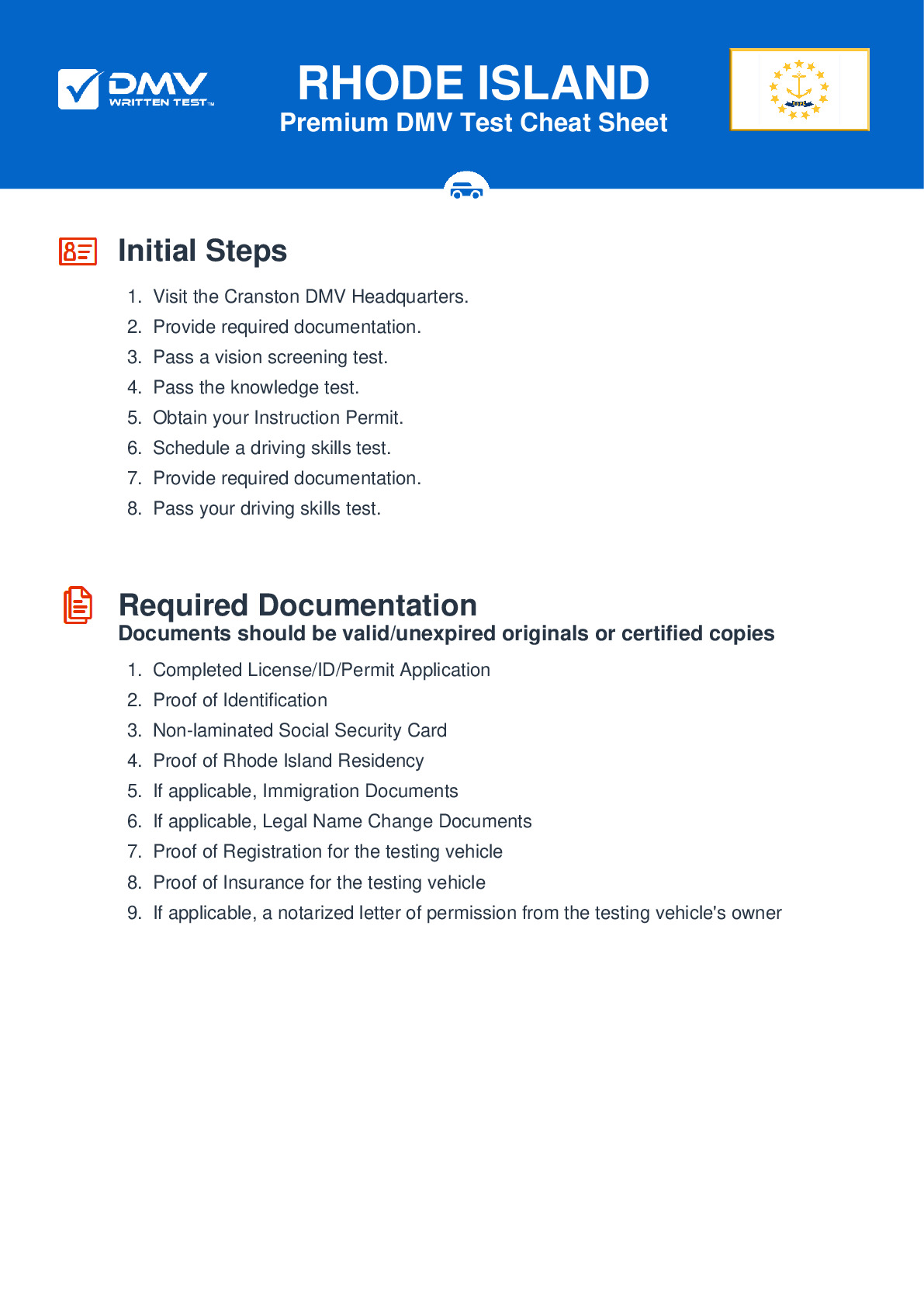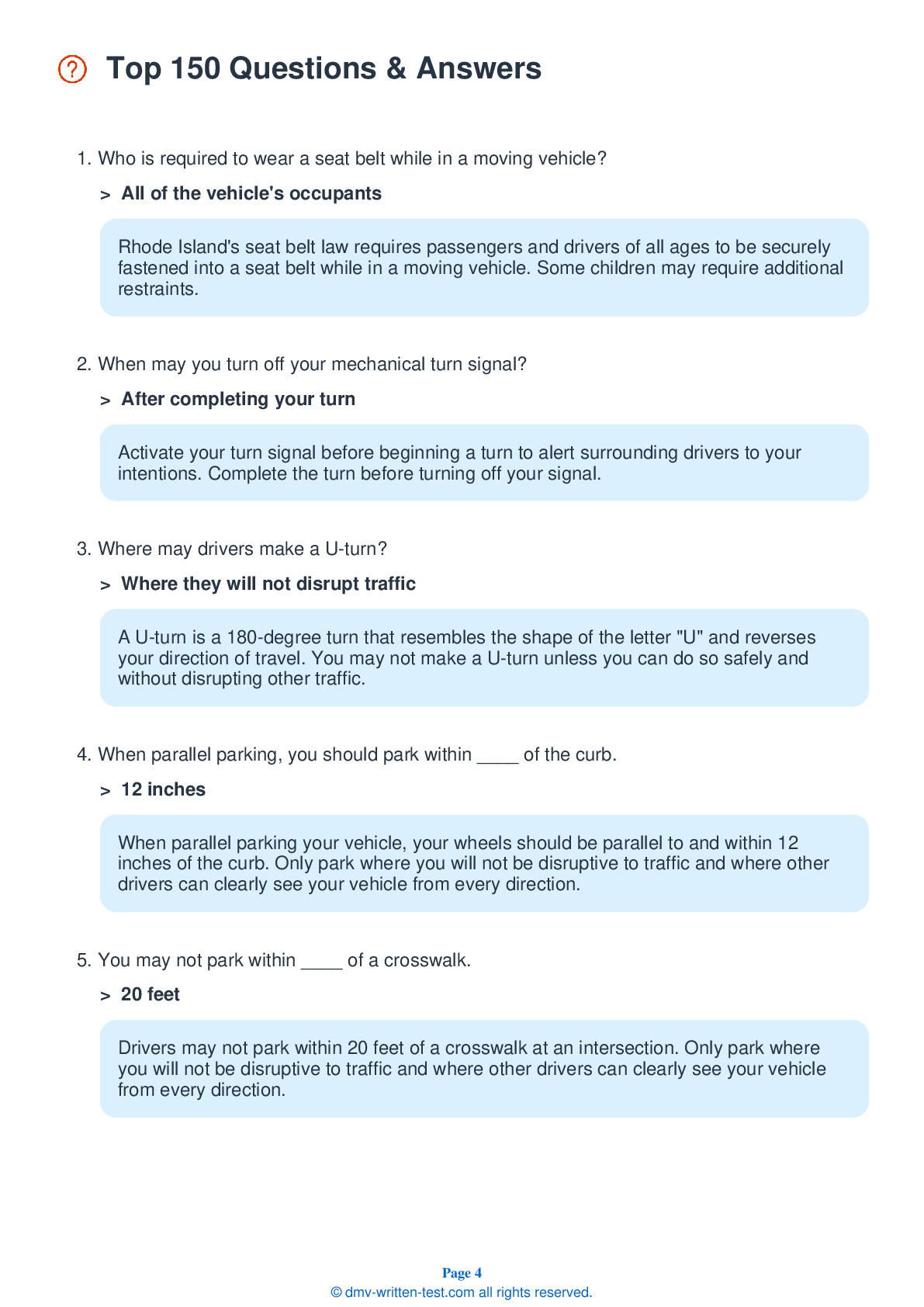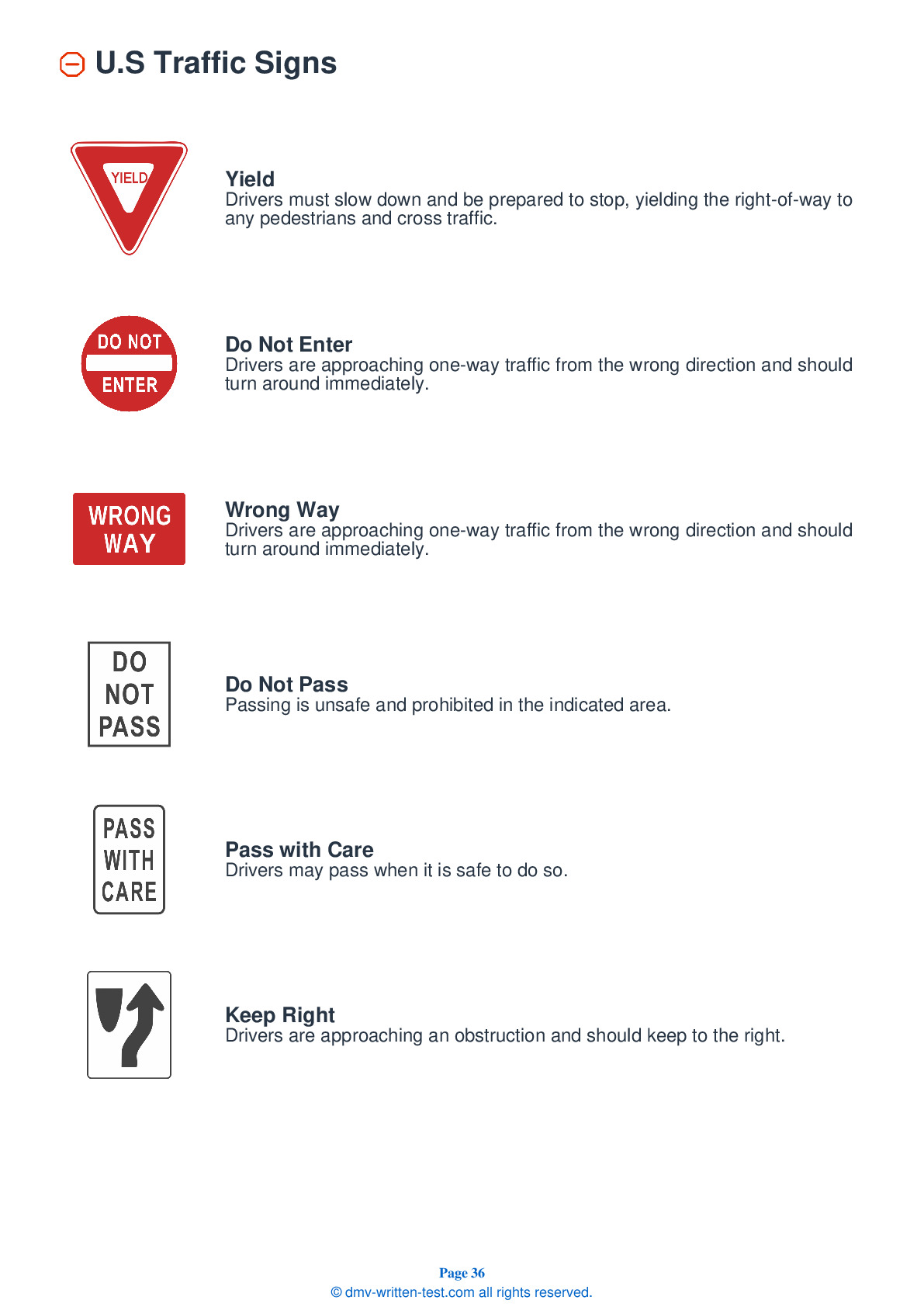2026 Rhode Island Permit Test 2
The following questions are from real DMV written tests. These are some of the actual permit questions you will face in Rhode Island. Each permit practice test question has three answer choices. Select one answer for each question and select "grade this section." You can find this button at the bottom of the drivers license quiz. For a complete list of questions and answers for Rhode Island please visit https://cheat-sheets.dmv-written-test.com/en/rhode-island/car.
Number of Tests
Number of Question
Passing Score
1. When a pedestrian guided by a dog or carrying a white cane is crossing the street:
Explanation
Blind or partially blind pedestrians may carry a white cane or use the assistance of a guide dog. You must always yield the right-of-way to a pedestrian who is using a guide dog or carrying a white cane.
2. You should not make sudden stops in front of large trucks and buses because:
Explanation
Large vehicles require longer distances to stop and accelerate than smaller vehicles do. Making a sudden stop in front of a large vehicle is dangerous because the other driver may not be able to stop in time to avoid a collision.
3. If the roadway is wet or icy, you should:
Explanation
Because your tires will not grip the road under wet, snowy, or icy conditions as well as they will under dry conditions, you should slow down if the roadway is wet or icy.
4. This bicyclist is signaling:

Explanation
Bicycles do not have turn signals so bicyclists use hand and arm signals to alert other drivers to their intentions. If a bicyclist puts their left arm straight out, they are signaling that they intend to turn left.
5. This sign means:

Explanation
Warning signs prepare drivers for upcoming road conditions and hazards and are usually yellow with black markings. This sign tells drivers that they may encounter traffic coming from the opposite direction.
6. If you want to get off the freeway but you have missed your exit, you should:
Explanation
If you miss your exit, you should take the next exit. Do not stop or back up on the highway, swerve across multiple lanes to try to make the exit at the last second, or cross over the median to turn around. All of these maneuvers are illegal and extremely dangerous.
7. When driving in fog, it is best to drive with:
Explanation
Use low beam headlights when driving in fog, rain, or snow. High beams may reflect off of the weather and make visibility even poorer.
8. Never try to pass more than one vehicle at a time.
Explanation




